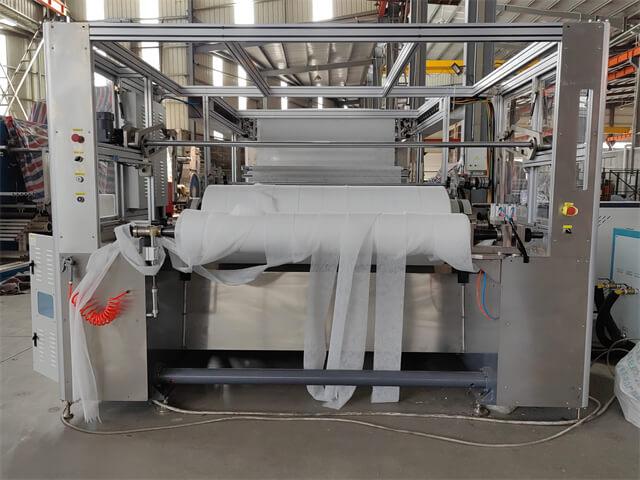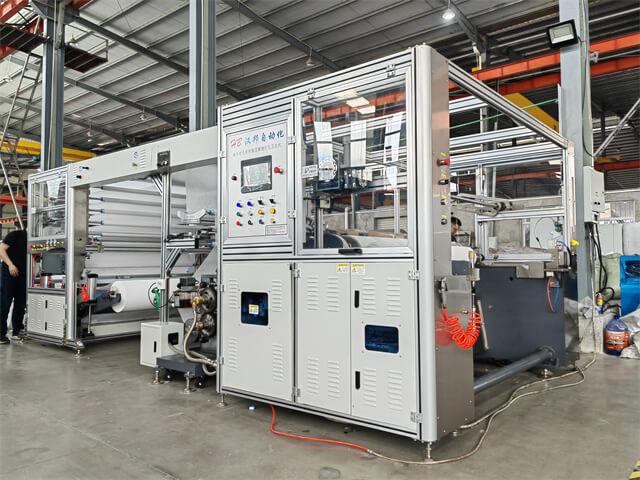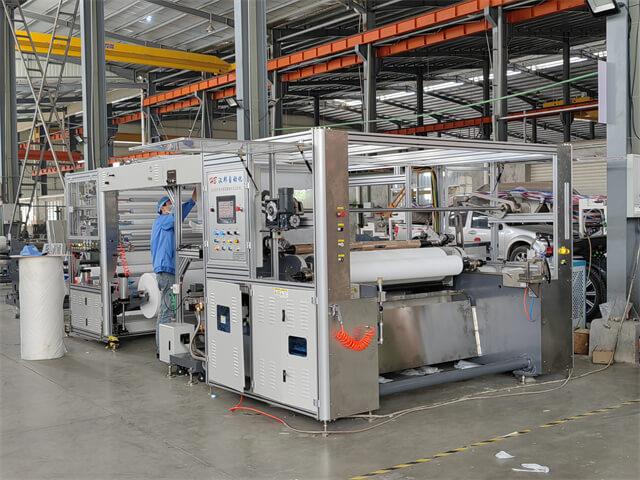Author:HB Nonwoven MachineryFROM:Compressed Towel Machine Manufacturer TIME:2023-10-30
The non woven fabric lamination machine plays a vital role in the disposable diaper and sanitary napkin industry. It is responsible for bonding various layers of materials together to create the final product. Choosing the perfect non woven fabric lamination machine is crucial for manufacturers to ensure high-quality and efficient production. In this article, we will explore the key factors to consider when selecting a lamination machine.

The speed of the lamination machine is a critical factor to consider. Higher machine speeds can significantly increase productivity and reduce production time. Manufacturers should evaluate their production requirements and choose a machine with an appropriate speed that meets their needs.

There are different lamination methods available, such as hot melt adhesive lamination and ultrasonic lamination. Each method has its advantages and disadvantages. Hot melt adhesive lamination provides a strong bond, while ultrasonic lamination offers a more environmentally friendly and energy-efficient solution. Manufacturers should select a lamination method based on their product requirements and sustainability goals.

It is essential to ensure that the lamination machine is compatible with the materials used in the production process. Different materials require specific bonding techniques and temperature settings. Manufacturers should choose a machine that can handle the materials they intend to use and provide consistent and reliable lamination results.
An easy-to-operate lamination machine can improve overall production efficiency. Manufacturers should consider machines that offer user-friendly interfaces, intuitive controls, and automated features. A machine with easy setup and adjustment capabilities can reduce downtime and minimize operator errors during operation.
Regular maintenance and timely service are crucial for the smooth operation of the lamination machine. Manufacturers should choose a machine from a reputable supplier that provides comprehensive maintenance and support services. This ensures minimal downtime and quick resolution in case of any technical issues.
Energy efficiency is an important consideration for environmentally conscious manufacturers. Choosing a lamination machine with energy-saving features can help reduce operational costs and minimize the environmental impact. Machines with advanced heat control systems and efficient power consumption should be preferred.
Manufacturers should look for machines that offer quality assurance features, such as tension control systems and defect detection sensors. These features ensure consistent lamination quality and reduce the risk of producing defective products. Investing in a machine with reliable quality control mechanisms can save costs associated with waste and rework.
Cost is undoubtedly an essential factor when choosing any machinery. However, it is crucial to strike a balance between cost and quality. While it may be tempting to opt for a lower-priced machine, compromising on quality and performance can have long-term consequences. Manufacturers should evaluate the overall value proposition, including the machine's capabilities, reliability, and after-sales support, before making a decision.
Choosing the perfect non woven fabric lamination machine requires careful consideration of various factors, including machine speed, lamination method, material compatibility, ease of operation, maintenance and service, energy efficiency, quality assurance, and cost. By evaluating these aspects, manufacturers can select a machine that best suits their production needs, ensures high-quality products, and contributes to a sustainable and efficient manufacturing process.
